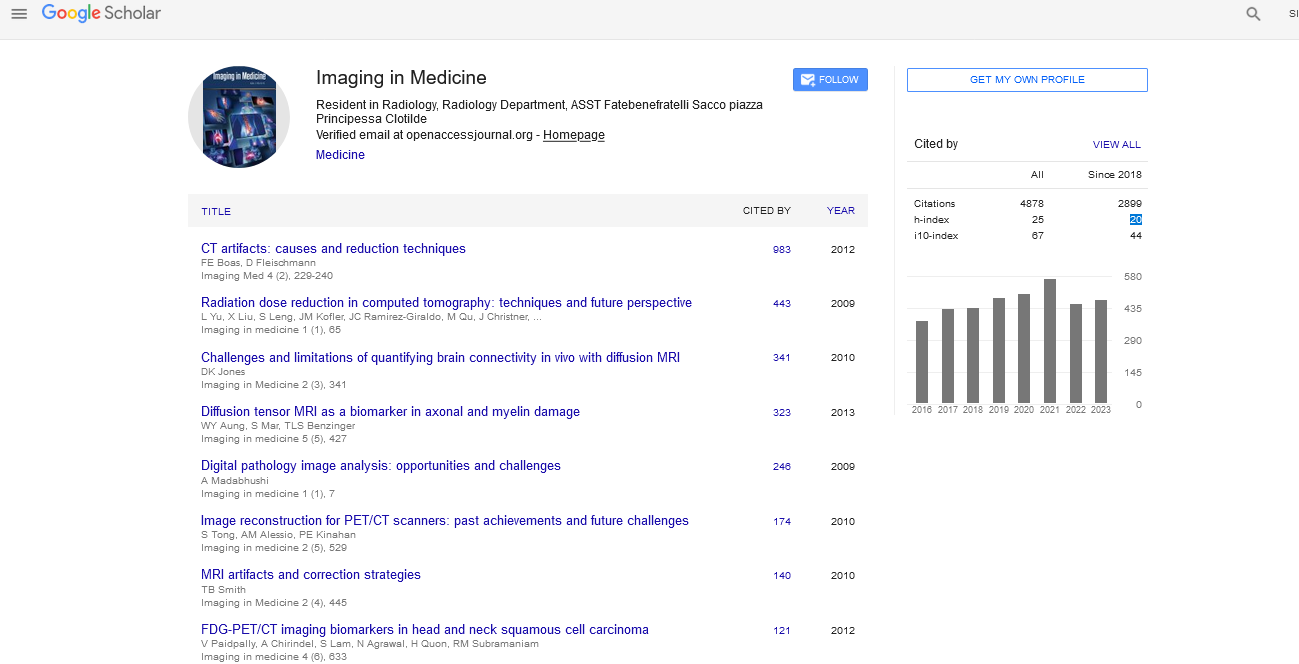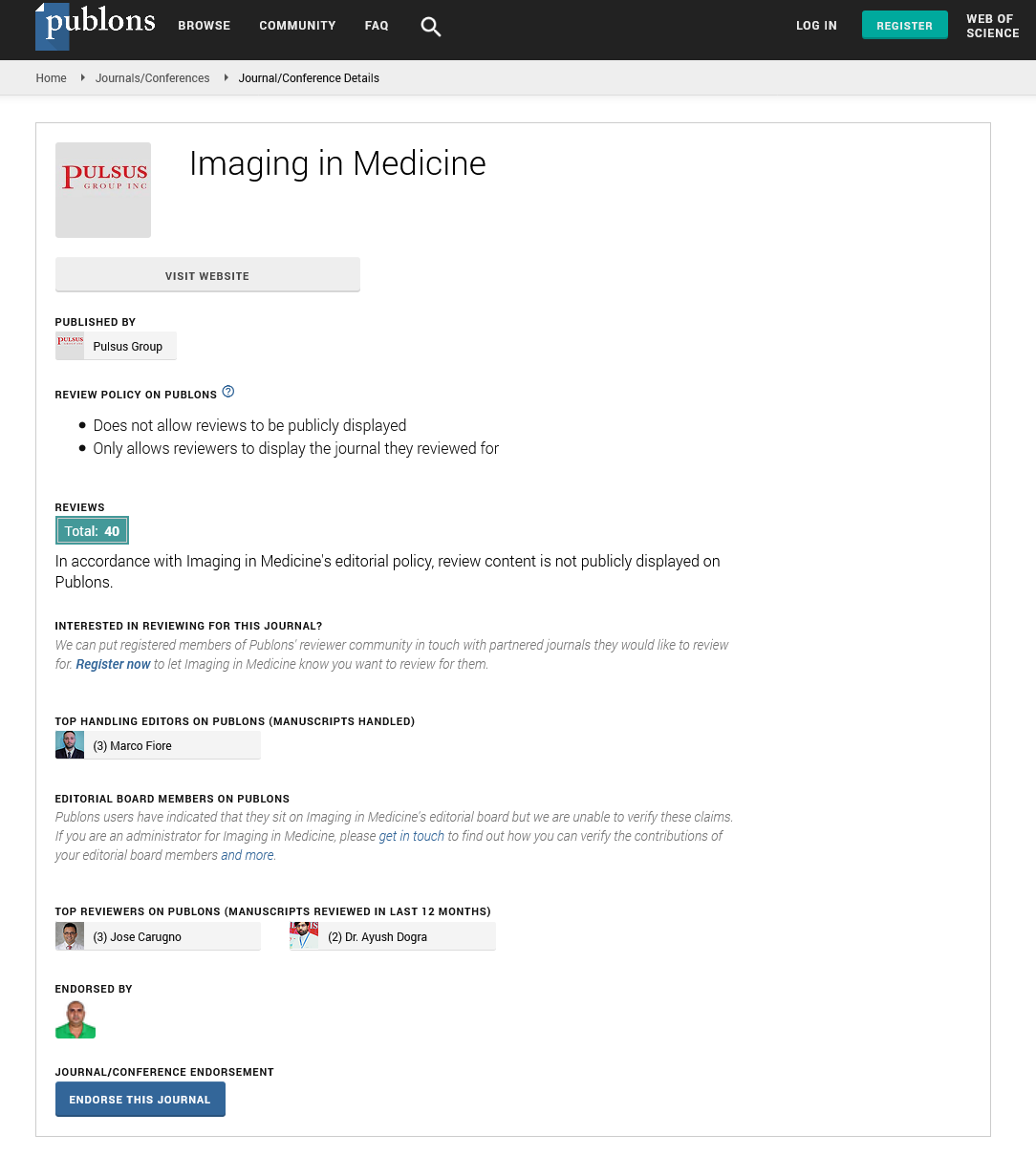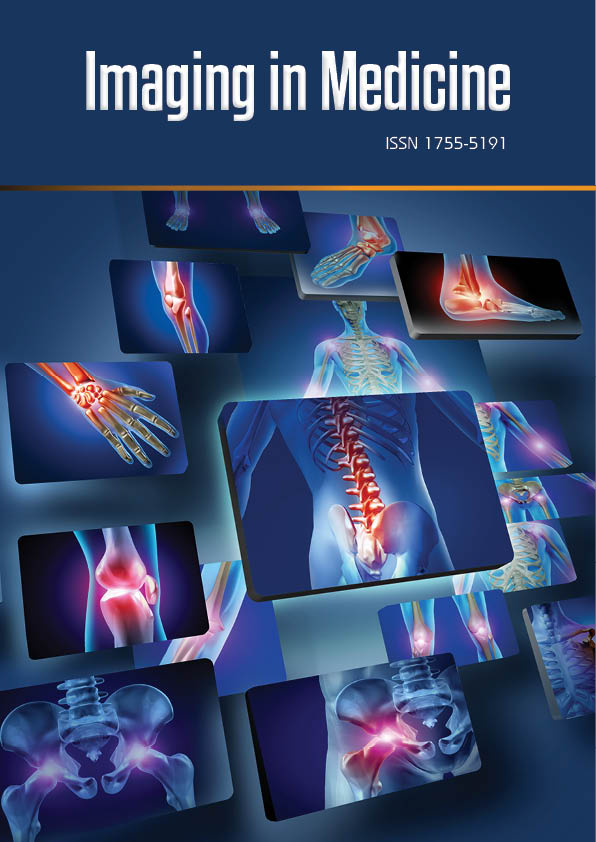Editorial - Imaging in Medicine (2025) Volume 17, Issue 1
Single-Photon Emission Computed Tomography (SPECT): Advancing Functional Imaging in Medicine
Adam Fragon*
Joint Department of Medical Imaging, University Medical Imaging Toronto (UMIT), University Health Network, University of Toronto, Canada
- *Corresponding Author:
- Adam Fragon
Joint Department of Medical Imaging, University Medical Imaging Toronto (UMIT), University Health Network, University of Toronto, Canada
E-mail: adam@gmail.com
Received: 17-Jan-2024, Manuscript No. fmim- 25-169971; Editor assigned: 20-Jan-2024, PreQC No. fmim-25-169971 (PQ); Reviewed: 04-October-2024, QC No. fmim-25-169971; Revised: 14-Jan-2024, Manuscript No. fmim- 25-169971 (R); Published: 21-Jan-2024, DOI: 10.47532/1755-5191.2025.17(1).1-3
Introduction
Single-Photon Emission Computed Tomography (SPECT) is a powerful nuclear medicine imaging technique that provides three-dimensional pictures of how organs and tissues function inside the body. Unlike traditional imaging methods that focus on structure, SPECT highlights physiological activity by tracking the distribution of a radioactive tracer [1]. This unique capability makes it invaluable for diagnosing conditions related to the heart, brain, and bones. Since its development in the late 20th century, SPECT has become a widely used tool in both clinical care and medical research.
How SPECT Works
SPECT imaging begins with the injection or inhalation of a small amount of a radiopharmaceutical—a compound labeled with a gamma-emitting radionuclide. Common tracers include technetium-99m and iodine-123. As the tracer travels through the body, it accumulates in specific organs or tissues depending on the biological process being studied. A gamma camera then rotates around the patient, detecting the emitted photons. Using computer algorithms [2], these signals are reconstructed into cross-sectional and three-dimensional images, showing not just anatomy but also metabolic activity and blood flow.
Key Applications of SPECT
SPECT is used in a variety of clinical areas due to its ability to visualize organ function:
Cardiology: One of the most common uses of SPECT is myocardial perfusion imaging. By showing how blood flows to the heart muscle, doctors can detect coronary artery disease, assess the severity of blockages, and evaluate the effectiveness of treatments.
Neurology: Brain SPECT scans help in the evaluation of epilepsy, dementia, Parkinson’s disease, and stroke by revealing patterns of cerebral blood flow and neuronal activity.
Oncology: SPECT can identify certain tumors and track how they respond to treatment. It also helps detect bone metastases in cancer patients.
Orthopedics and Bone Disorders: Bone SPECT is particularly sensitive for detecting fractures, infections, or areas of abnormal bone turnover that may not appear clearly on X-rays.
Other Applications: SPECT is used in thyroid, liver, and kidney studies, providing insights into both structure and function.
Advantages of SPECT
The growing use of SPECT in healthcare is due to its significant benefits:
Functional Imaging: Unlike CT or MRI, which show structure, SPECT reveals physiological processes, helping clinicians understand disease activity [3].
High Sensitivity: It can detect abnormalities at an early stage, often before structural changes become visible on other imaging tests.
Versatility: SPECT is applicable across multiple specialties, from cardiology and neurology to oncology and orthopedics.
Cost-Effectiveness: Compared to other nuclear imaging methods like PET, SPECT is often more affordable and widely available.
Limitations and Challenges
Despite its advantages, SPECT has certain limitations:
Lower Resolution: Compared to PET scans, SPECT images have lower spatial resolution, making small lesions harder to detect [4].
Radiation Exposure: Though relatively low, patients are still exposed to ionizing radiation from radiopharmaceuticals.
Lengthy Procedures: Scans typically take longer than CT or MRI, which can be uncomfortable for some patients.
Availability of Tracers: The accuracy of SPECT depends on the specific radiopharmaceutical used, and access may vary between regions.
The Future of SPECT
Ongoing innovations aim to improve the quality, speed, and clinical utility of SPECT. Hybrid imaging systems, such as SPECT/CT, combine functional and structural data, offering more precise diagnostic information. Advances in detector technology are enhancing image resolution and reducing scan times [5]. Additionally, the development of new radiotracers is expanding the range of diseases that SPECT can evaluate. Artificial intelligence is also being integrated to assist in image interpretation, further boosting diagnostic accuracy.
Conclusion
Single-Photon Emission Computed Tomography (SPECT) has carved out a vital role in modern medicine by providing functional insights into the body’s organs and tissues. From detecting heart disease to evaluating brain disorders and bone conditions, SPECT enables clinicians to diagnose illnesses earlier and manage them more effectively. While challenges such as resolution and scan duration remain, rapid technological advancements are making SPECT more powerful and accessible. As these innovations unfold, SPECT will continue to shape the future of diagnostic imaging, bridging the gap between structure and function in patient care.
References
- Germani Y, Sansonetti PJ (2006) The genus Shigella. The prokaryotes In: Proteobacteria: Gamma Subclass Berlin: Springer 6: 99-122.
- Aggarwal P, Uppal B, Ghosh R, Krishna Prakash S, Chakravarti A, et al. (2016) Multi drug resistance and extended spectrum beta lactamases in clinical isolates of Shigella: a study from New Delhi, India. Travel Med Infect Dis 14: 407â413.
- Taneja N, Mewara A (2016) Shigellosis: epidemiology in India. Indian J Med Res 143: 565-576.
- Farshad S, Sheikhi R, Japoni A, Basiri E, Alborzi A (2006) Characterizationof Shigella strains in Iran by plasmid profile analysis and PCR amplification of ipa genes. J Clin Microbiol 44: 2879â2883.
- Jomezadeh N, Babamoradi S, Kalantar E, Javaherizadeh H (2014) Isolation and antibiotic susceptibility of Shigella species from stool samplesamong hospitalized children in Abadan, Iran. Gastroenterol Hepatol Bed Bench 7: 218.
Google Scholar, Crossref, Indexed at
Google Scholar, Crossref, Indexed at
Google Scholar, Crossref, Indexed at


